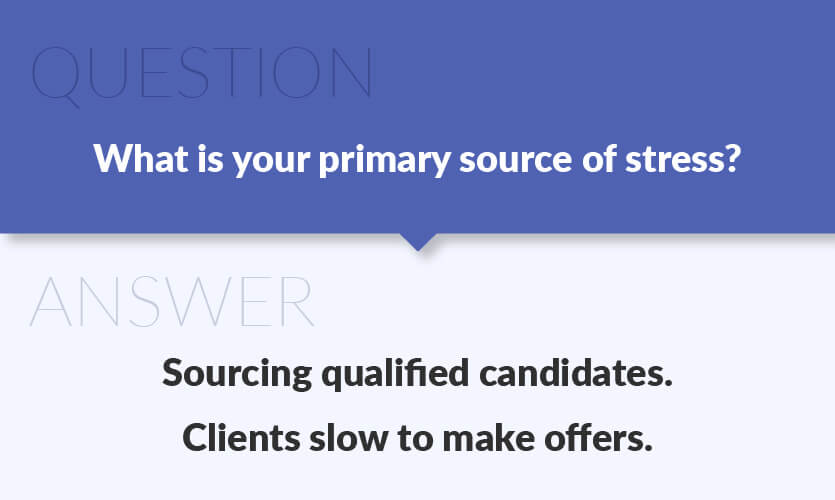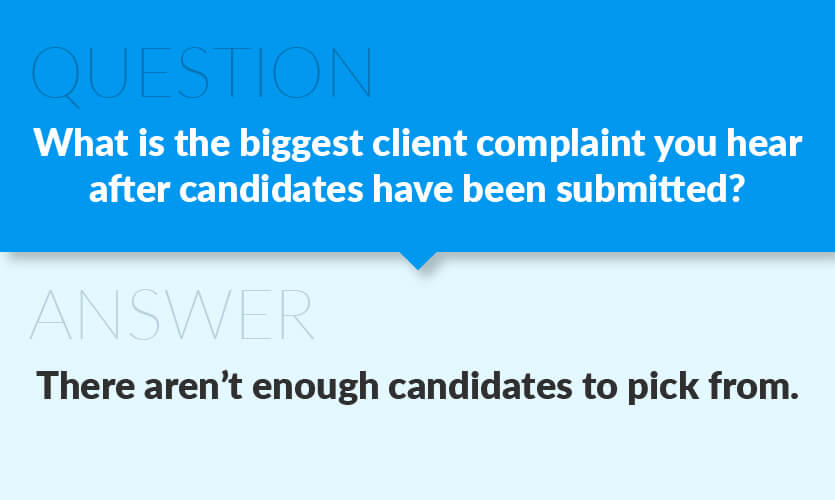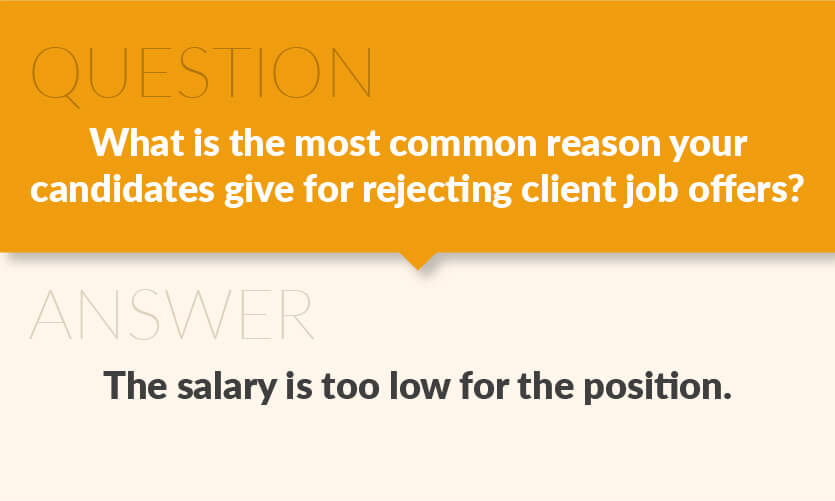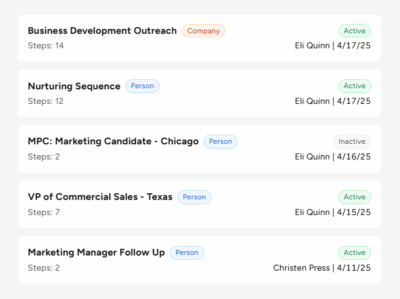Learning about what prevents recruiters from making more placements is a key focus of Top Echelon’s 2016-17 State of the Industry Report. And what’s the answer? Well, before we reveal any recruiting trends, let’s set the stage for our second annual recruitment industry report.
At the end of last year, Top Echelon conducted a survey of more than 5,000 recruiters nationwide to compile information, specifically recruiting trends. The survey gauged recruiters’ opinions regarding a wide range of topics and recruitment industry trends, from their primary source of stress to the Trump Presidency.
But as always, what drives recruiters is placements—the employee placement process, the prospects, the challenges of recruitment, and the solutions. So, with that in mind . . . what are the latest recruitment trends and how do they affect recruiters’ ability to make placements?
Let’s start with a recruitment industry overview: this current market is most definitely a candidates’ market. The results of Top Echelon’s survey definitely attest to this fact. The candidates’ market brings with it certain realities for recruiters, and those realities comprise the forces that largely shape the breadth and scope of their recruiting desks.
There was a series of questions from Top Echelon’s State of the Industry Report survey that perfectly illustrates these present realities and their challenges. These questions also help to reveal the latest trends in the recruitment and selection process, with considerations given not just to recruiters, but to employers and candidates, as well.
Trends in recruitment about the biggest sources of stress
Question #1 – “What is your primary source of stress?”
Two answers were neck-and-neck in terms of the most responses:
- Sourcing qualified candidates (35.0%)
- Clients too slow to make offers (30.8%)
When it’s a candidates’ market, quality candidates are difficult to find. That’s the very definition of a candidates’ market. On the bright side, it means that job orders are more or less plentiful for recruiters. If this was a recession from a recruiter’s point of view, they’d be more concerned about a lack of job orders. Finding candidates would be the least of their worries.
That leads us to what almost seems to be recruiters’ never-ending struggle: getting clients to move more quickly! What is it with clients? It seems as though this is a battle each and every year. Recruiters present top talent, then their clients hem and haw and drag their feet. The result? The candidates drop out of the hiring process steps because they have more options.
Report teaser: Want to know all of the things that stress a recruiter? Find out what else drives a recruiter crazy on a daily basis on their desk. See if what drives other recruiters crazy also drives YOU crazy. Where do job orders enter the equation? What else stresses recruiters about candidates? Find out the answers to these questions and more!
Client complaint trends in recruitment and selection
Question #2 – “What is the biggest client complaint you hear after candidates have been submitted?”
So we know what recruiters are complaining about. What are clients complaining about, at least in terms of candidates? Far and away, the most popular answer was, “There aren’t enough candidates to pick from” at 45.8%.
There aren’t enough candidates to pick from? Yes, there aren’t enough candidates to pick from because there is a shortage of qualified candidates overall. That’s because this is a candidates’ market!
There is obviously a disconnect that exists in the employment marketplace right now. That disconnect exists on a number of different levels, including the following:
- Employers are not wrapping their brains around how much of a candidates’ market it is.
- Employers don’t realize how quickly they have to move to hire the talent that is available.
- Recruiters can’t seem to effectively communicate to hiring managers the many realities associated with the current situation.
These trends in recruitment and selection reveal that even when employers are able to successfully attract and recruit talent, their selection process leaves something to be desired. Successfully bridging the skills gap will require a concise, organized placement process that doesn’t keep talent waiting. This may involve employing tools like recruiting software or a recruiting network to help source more qualified candidates from the beginning.
Report teaser: These are just some of the disconnects that exist in the marketplace. As you well know, the placement process is essentially a dance between the recruiter, their client, and the candidate. In many instances, one or more of the parties are out of sync, stepping on each other’s feet and in some cases tumbling to the floor.
Latest trends in recruitment: rejecting job offers
Question #3 – “What is the most common reason your candidates give for rejecting client job offers?”
Okay, we’ve talked about recruiters and we’ve talked about clients. It’s time to talk about candidates now. What appear to be their major gripes? In this case, there were three responses that each earned over 20% of the recruiters’ vote. The most popular answer was “The salary is too low for the position” at 29.7%.
So here are the two key indicators that this is 100% a candidates’ market:
- Candidates are rejecting offers of employment from organizations. (If this was not a candidates’ market, they’d be less likely to reject anything.)
- Candidates who are rejecting offers of employment are doing so primarily because they believe that the salaries associated with the offers are too low.
Report teaser: Any recruiter who wants to be successful in a candidates’ market better know how to deal with top candidates. A job order does not mean much if you can’t fill it. That means you must know how top candidates think, how they behave, and what they’re likely to do in certain situations. For more insight into what candidates have been doing for the past year and how that relates to recent trends in recruitment,
Recruiting trends 2017: a fearless recap
So let’s recap, shall we? Based upon the information above, we have:
- Recruiters who can’t source enough qualified candidates.
- Recruiters who are complaining that clients aren’t moving quickly enough to hire top talent.
- Clients who are complaining that there aren’t enough candidates to pick from.
- Candidates who are rejecting offers because the starting salary connected to the offer is too low. (At least, they think it’s too low.)
That about sums up the major trends in the recruitment industry and the corresponding challenges that exist in the current marketplace for recruiters. In other words, it sums up what is preventing recruiters from making more placements than they’re already making.
There is much more in the way of recruitment industry analysis in Top Echelon’s State of the Industry Report. Also included are the following:
- Information regarding recruitment industry growth in key industries and disciplines
- Recruiting industry statistics regarding hot industries and those industries that are the toughest in which to make placements
- Recruitment forecasting for the rest of 2017
- Feedback regarding the online recruitment industry, including the effectiveness of candidate sourcing and job advertising options
- Digital recruitment trends, including the role of technology and the impact of the Millennial Generation
- Recruitment industry benchmarking in regards to what recruiters think of the economy, the Trump Presidency, their goals for business development, and the future of the recruitment industry
- Additional recruitment market trends, specifically how recruiters prefer to market their services to candidates, clients, and prospective clients
(Editor’s note: Top Echelon surveyed more than 5,000 independent recruiting agencies nationwide for this report, providing a snapshot of the recruitment agency industry. All information is based upon answers submitted by recruiters during the month of December 2016.)











